Last August, I went on a hike in Backus Woods with the Norfolk Field Naturalists to identify and photograph fungi. For the first two parts of the observations I made during the hike, see Part 1 and Part 2. My two previous posts covered all of the fungi (and several interesting non-fungi including wood frogs and fungus weevils) that I photographed and described some of their interesting biologies and ecologies. This final post is a roundup of the non-fungi observations I made during the hike.
You would be forgiven for thinking that this next observation also represented the fruiting body of a fungus. Instead, this drooping white organism is actually a plant without chlorophyll (and thus without the colour green and without the ability to capture light from the sun and turn it into sugar). Ghost Pipes (Monotropa uniflora) are parasitic plants, which feed indirectly on the roots of their host trees via underground fungi that attach to the roots in a mycorrhizal relationship (Runtz 2020). The flower heads droop, and give this strange flower its name of “pipe” but when they are pollinated (by bees usually) they will raise their flowers straight upward (Runtz 2020).

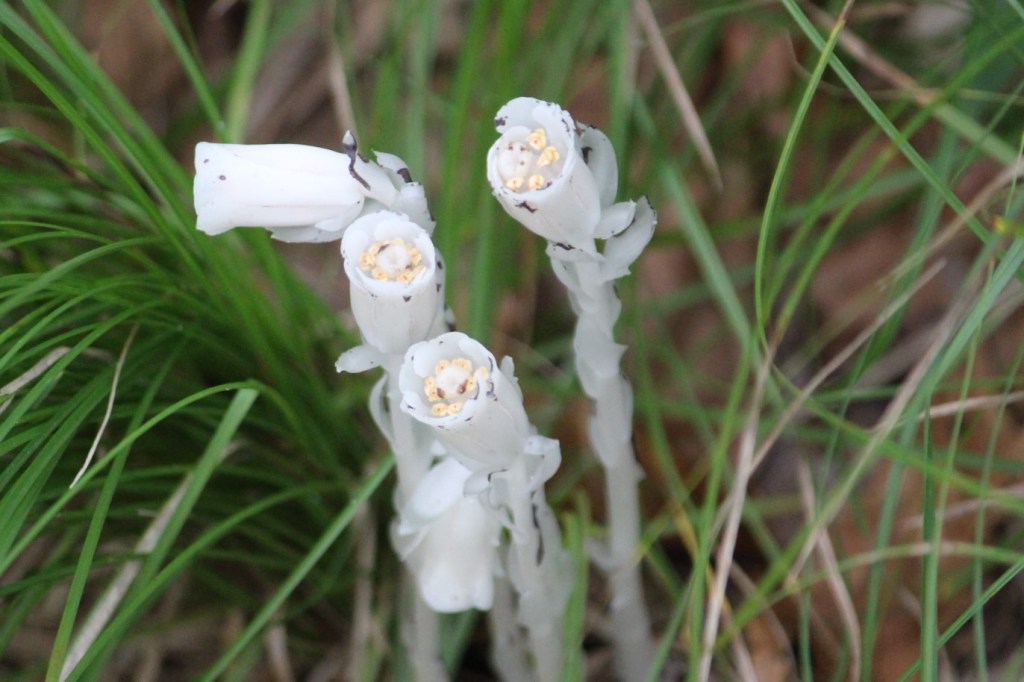
Ghost Pipes (Monotropa uniflora), a bizarre, non-photosynthetic parasitic plant. The flower heads that are drooping have not been pollinated, while the upraised flowers have been pollinated.
Some more traditional plants (you know, ones that are green and perform the magic of photosynthesis) were also spotted along the trails. I learned that the bright red clusters of berries were the ripened fruits of George-Michael-in-the-Banana-Stand (Arisaema triphyllum)*. Besides the red berry clusters, we also saw representatives with green berries that hadn’t ripened yet. Although they may look edible, these red berries contain high levels of oxalic acid and cause painful burning in people that eat them… although apparently white-tailed deer, wild turkeys and wood thrushes will eat them and be fine (Holland 2016).
*more traditionally, the common name is Jack-in-the-Pulpit and most people probably know it by this name, but I couldn’t resist using the new common name proposed by The Field Guides Podcast (for my review of the Field Guides Podcast go here)


Both of these images are of different George-Michael-in-the-Banana-Stand plants in different stages of their lives.
Another red-berried plant was a new one for me: Partridgeberry (Mitchella repens). These red berries are edible, but apparently tasteless. The flowers are pollinated by bumblebees and as the name suggests the berries are consumed by ground-birds (such as grouse and turkeys), but also by skunks and white-footed mice (Hayden 2012). You would think that partridges would eat these berries… but we don’t have any partridges in North America, and this species only grows here… so here we have a very useless common name.
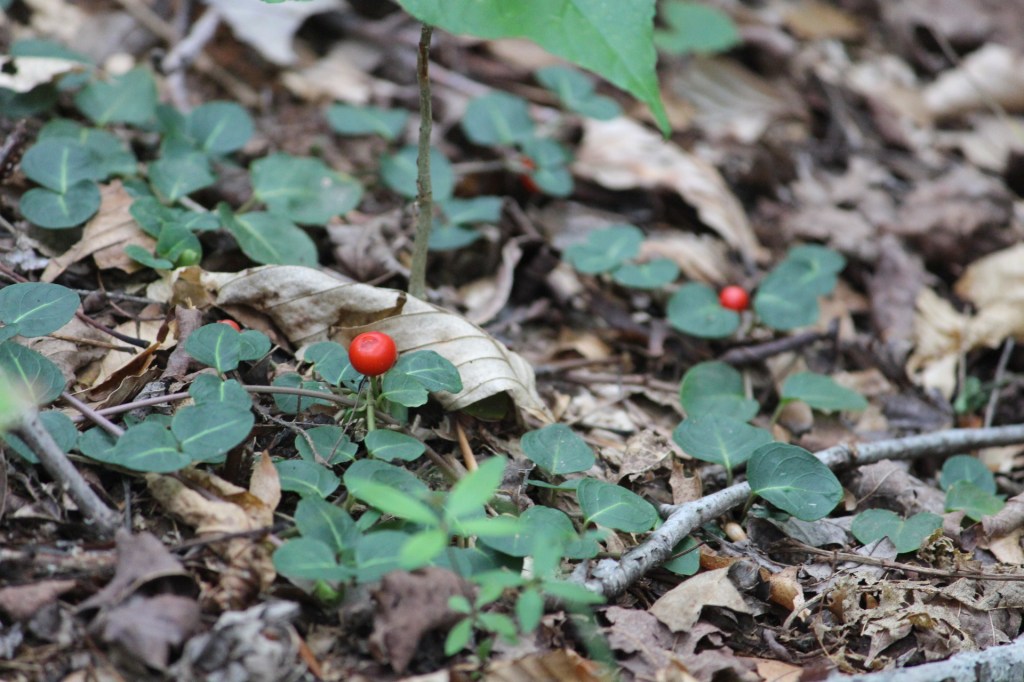
Two other wildflowers added colour and beauty to our hike: Spotted Jewelweed (Impatiens capensis) and Great Blue Lobelia (Lobelia siphilitica). Spotted Jewelweed is pollinated mainly by hummingbirds and bees, while the Great Blue Lobelia is pollinated mostly by bumblebee (Eastman 1995). I unknowingly captured this interaction between Ruby-throated Hummingbirds and Spotted Jewelweed in the past, so I’ve included a picture here.
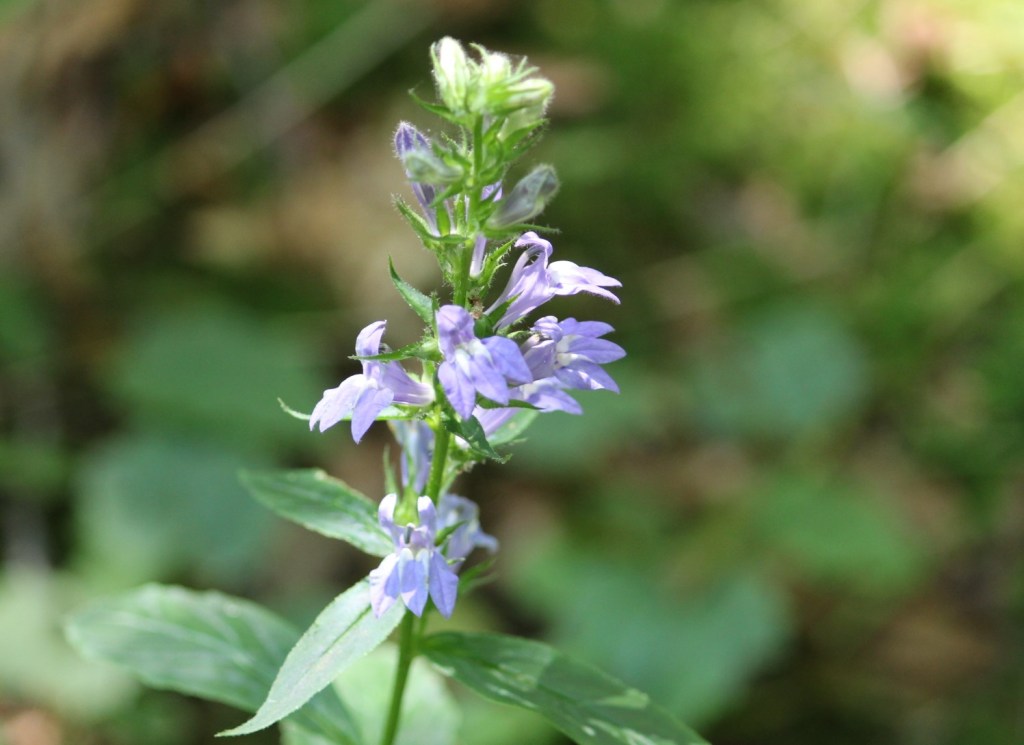
Great Blue Lobelia 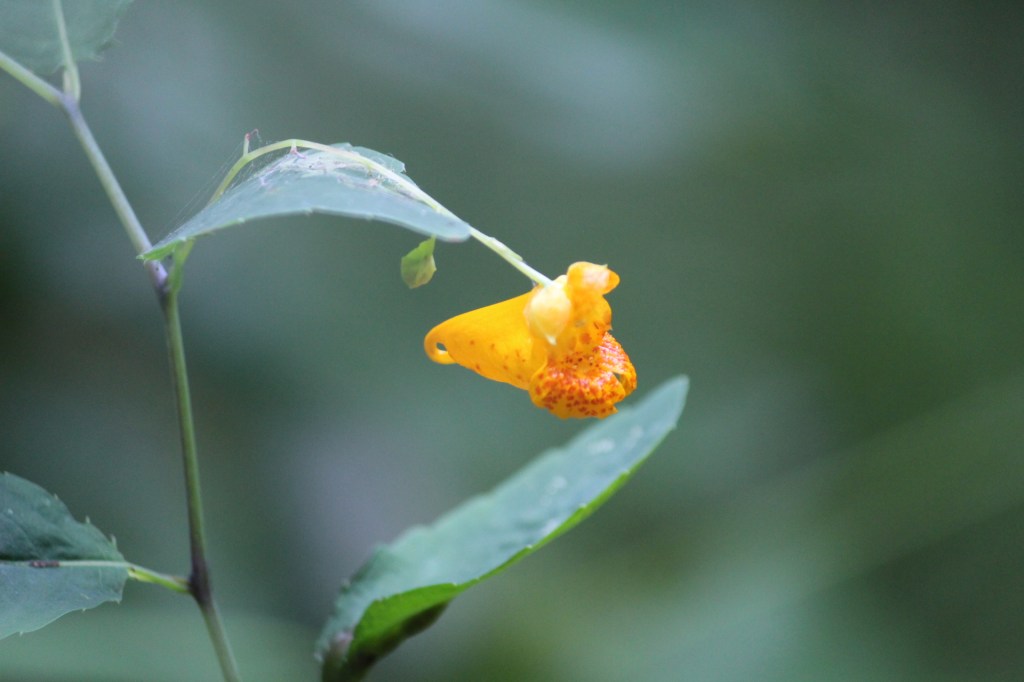
Spotted Jewelweed in Backus Woods, August 2021. 
Ruby-throated Hummingbird feeding on Spotted Jewelweed in Pinery Provincial Park, August 2019. Hummingbirds are important pollinators of these flowers.
A few interesting arthropod encounters also enhanced the hike. An American Giant Millipede (of the Narceus americanus complex)* was found in curled defensive posture.
*the complex refers to the fact that this “species” is actually made up of many species that may be extremely difficult to distinguish

On the way out of Backus Woods, I spotted some speedy insects scurrying across the sands and gravels of the path, those predatory jewels known as Tiger Beetles (Cicindelinae). The two species that I spotted and photographed were the Punctured Tiger Beetle (Cicindela punctulata) and the Big Sand Tiger Beetle (Cicindela formosa).
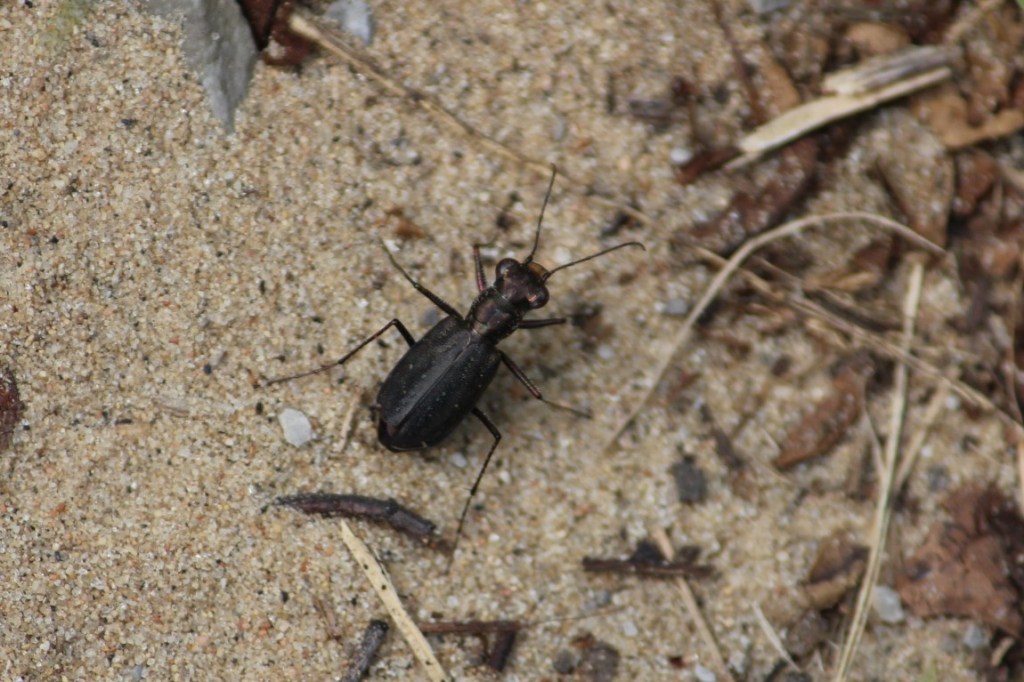
Punctured Tiger Beetle (Cicindela punctulata). 
Big Sand Tiger Beetle (Cicindela formosa).
I hope you enjoyed this tour through Backus Woods with a focus on Fungi. I know I learned a lot and am excited for future outings with the Norfolk Field Naturalists!
References:
Eastman, John. 1995. The Book of Swamp and Bog.
Hayden, W. John. 2012. “2012 Wildflower of the Year: Partridge Berry, Mitchella Repens.” Virginia Native Plant Society Brochure, 2012, 1-3.
Holland, Mary. 2016. Naturally Curious Day by Day.
Runtz, Michael. 2020. Wildflowers of Algonquin Provincial Park.
For more Nature Observations in Norfolk County, see:
-Fascinating Fungi (NFN Fungi Hike, Part 2)
–Freezing Frogs and Fascinating Fungi (NFN Fungi Hike Part 1)
-A Visit to Big Creek, Part 1 and Part 2
–Cuckoo Wasps and Carpenter Bees
–Flies Falling to Fungi and Other Dipteran Observations
–Fuzzy Flies and Song Sparrows
–Leafhoppers, Lepidopterans and Longhorns
And for more nature observations, photos and natural history facts, follow me on instagram at norfolknaturalist
2 replies on “Parasitic Plants and other Non-Fungi (NFN Fungi Hike Part 3)”
[…] This year, I joined the Norfolk Field Naturalists, an organization of nature enthusiasts in Norfolk County and my first experience with them was a hike in Backus Woods, searching for fungi to photograph. We found plenty, I learned lots, and I wrote up my observations in a series of 3 posts: Part 1, Part 2, Part 3. […]
LikeLike
[…] joining with local nature enthusiasts for hikes (see NFN Fungi Hike posts, part 1, part 2, and part 3) and listening in on monthly presentations beginning in September. The December NFN meeting is […]
LikeLike